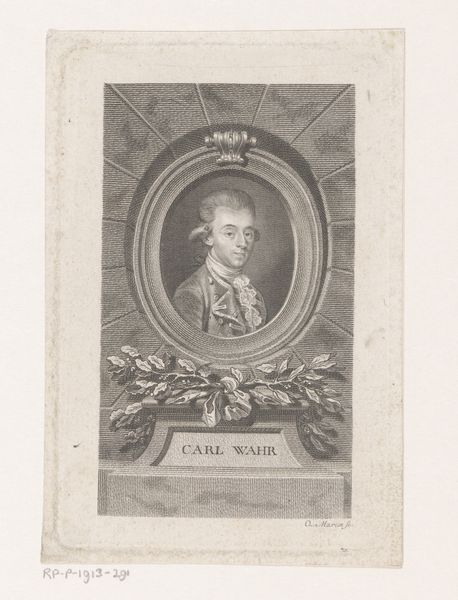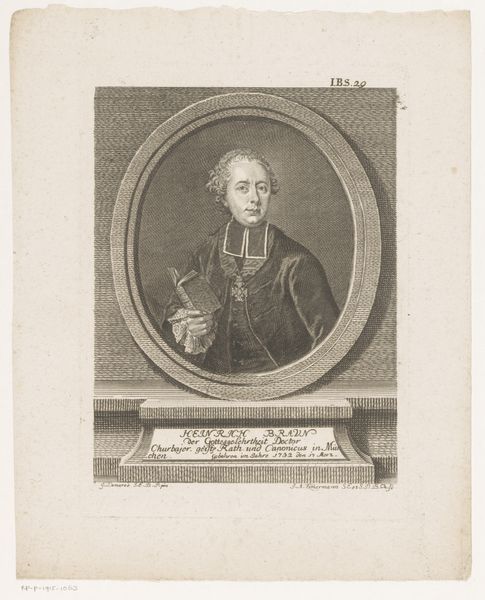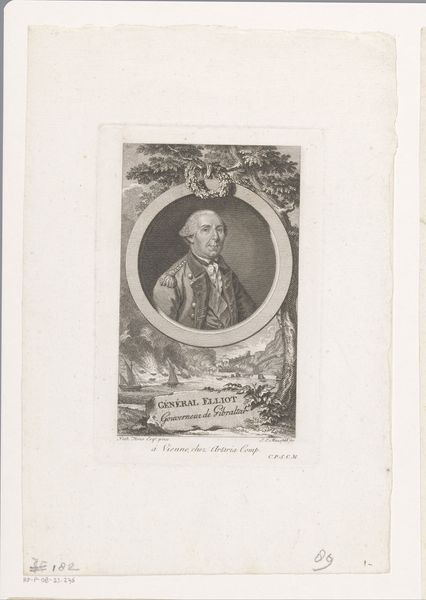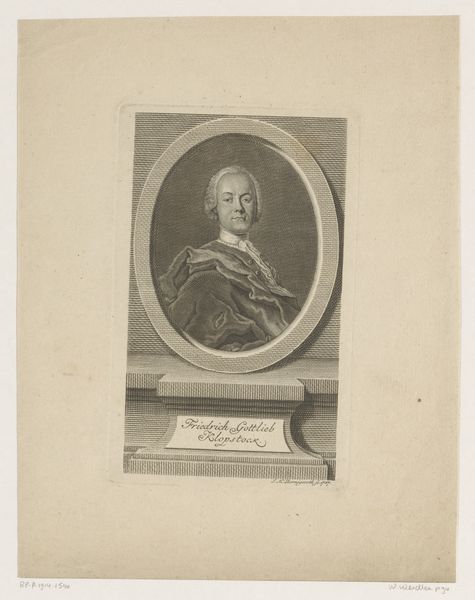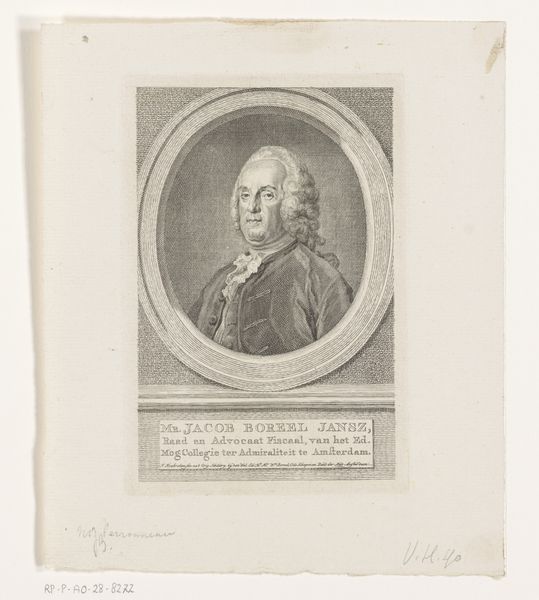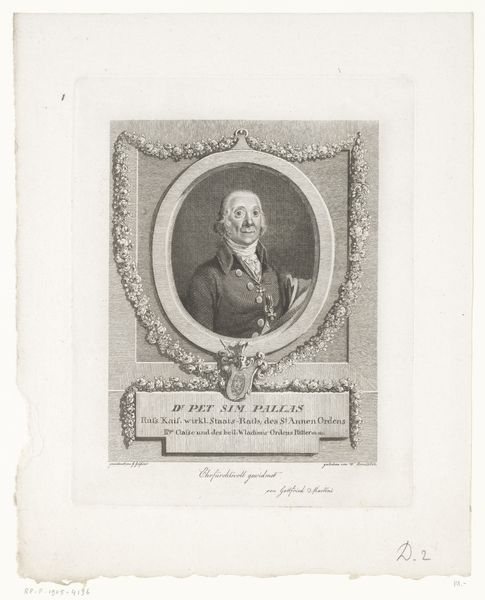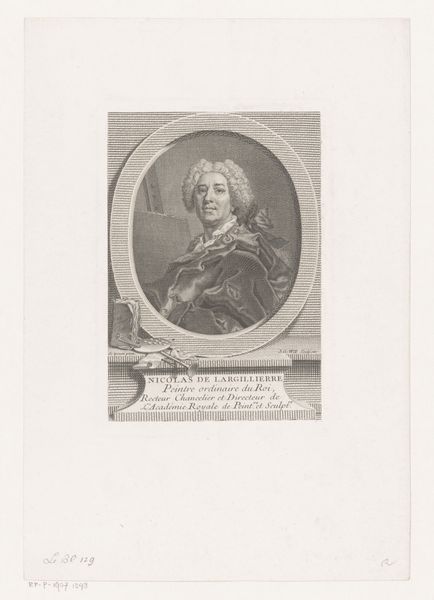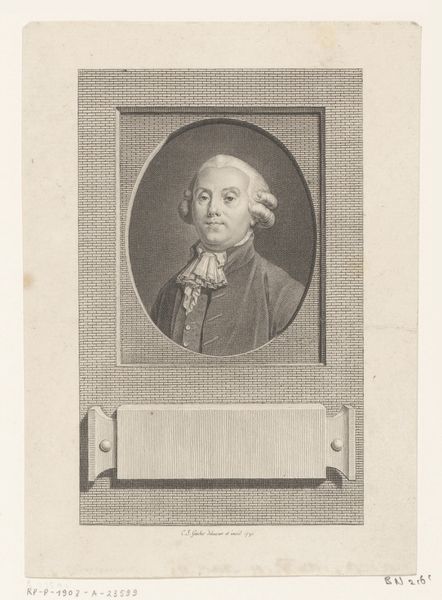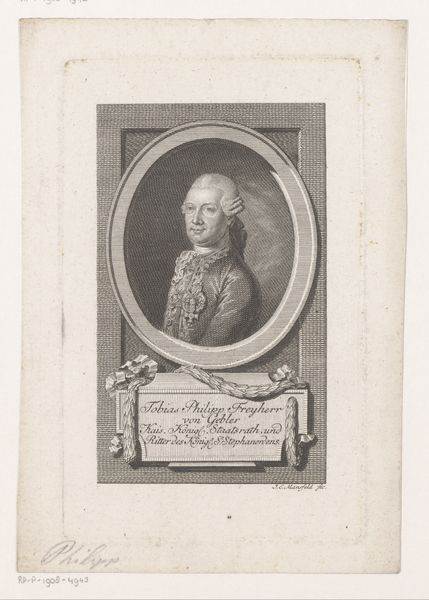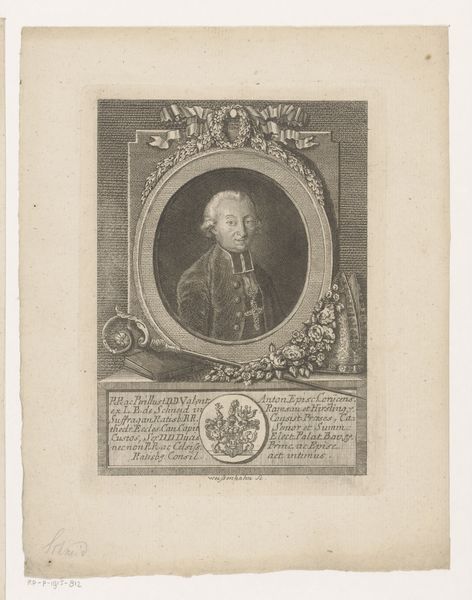
Dimensions: height 164 mm, width 105 mm
Copyright: Rijks Museum: Open Domain
This is Johann Friedrich Schleuen's portrait of Karl Wilhelm Ramler, made with etching techniques, likely during the latter half of the 18th century. The composition immediately presents a structured hierarchy. An oval frame, adorned with foliage, encases Ramler, setting him apart and monumentalizing his image. Note how the detailed lines of the face and wig contrast with the smoother textures of his coat. Below, Schleuen adds a plinth, an architectural element, upon which Ramler's name is inscribed. Here, he includes symbolic objects such as books and laurel wreaths. These elements elevate the portrait beyond mere likeness, embedding it within a semiotic system that signifies knowledge and honor. The composition functions much like a carefully constructed argument, each element contributing to a persuasive presentation of Ramler's persona. Consider, too, how the print medium itself—with its capacity for reproduction and dissemination—democratizes access to Ramler's image, transforming him into a figure of public importance. This etching, therefore, is not just a portrait, but a statement about representation, knowledge, and status.
Comments
No comments
Be the first to comment and join the conversation on the ultimate creative platform.
